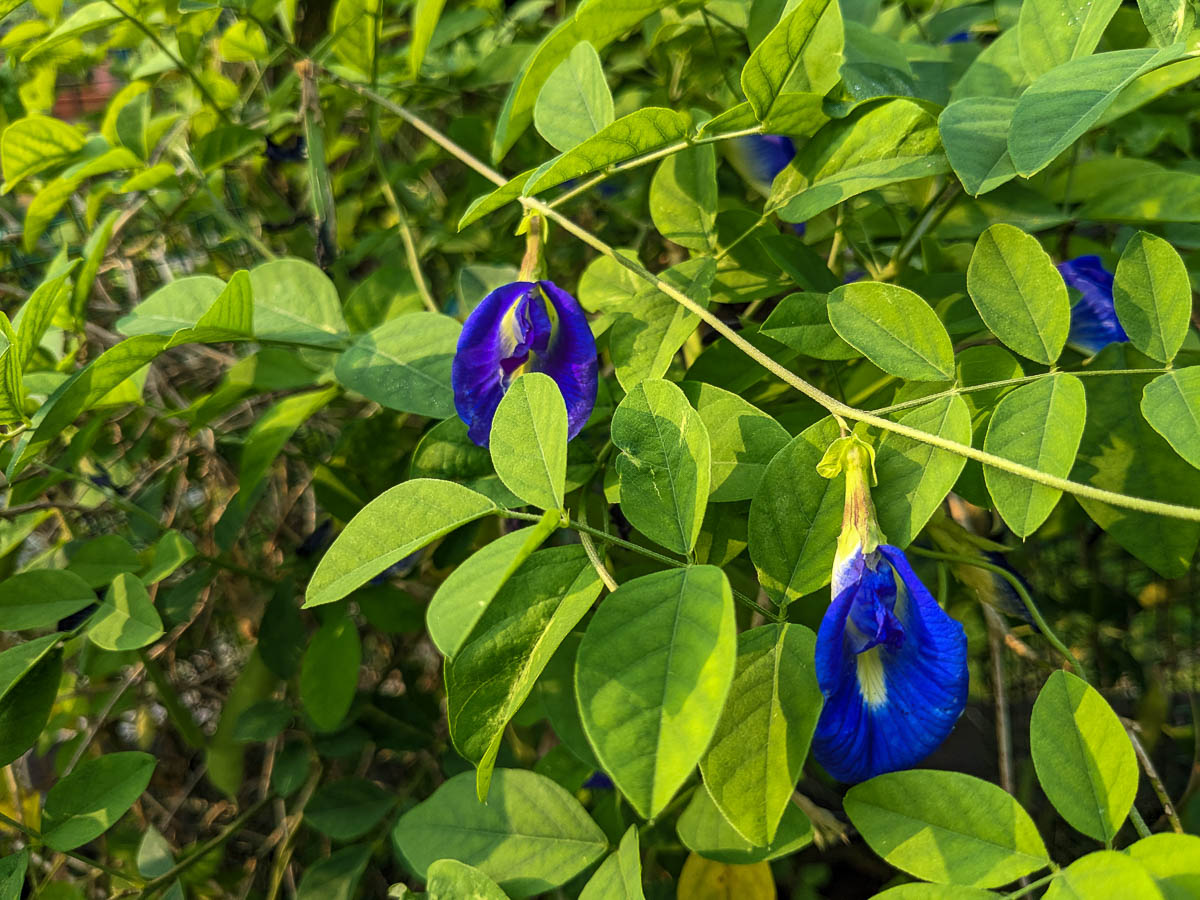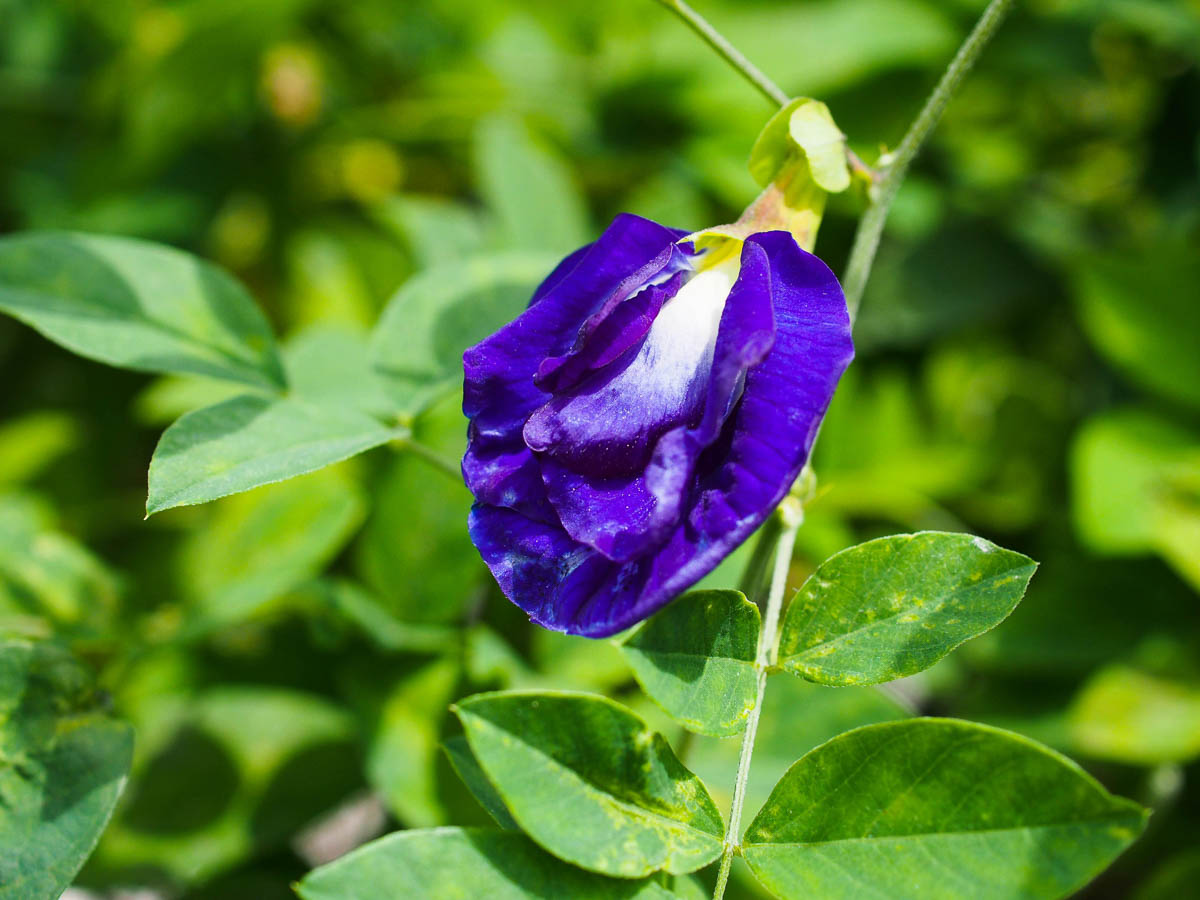Butterfly Pea
Butterfly Pea (Clitoria ternatea)
Other common names: Blue Pea, Blue Vine, Pigeon Wings, Mussel Shell Creeper, Bunga Telang, 蝶豆, 蝴蝶花豆

Butterfly Peas are a hardy edible flower that is used to colour drinks, desserts, and rice dishes.
An annual plant, Butterfly Peas are often grown in rotation with other fruiting climbers.
This plant is part of the Fabaceae or Bean family, which includes other popular edible fruits like Winged Bean, Peanut, and Long Bean. All members of the bean family can be used for companion planting as they can fix nitrogen into the soil.
Sun and soil needs:

This plant thrives in 4-8 hours of direct sunlight. Plants do best in pots with loamy soil at least 20cm deep, or in true ground.
This vine is vulnerable to heat stress during the dry season. Water it regularly and mulch the base to prevent water loss.
As a fast-growing vine, this plant needs to be trained up a light trellis. The vine readily produces flowers and can be used to beautify fences and arch trellises.
As with all members of the bean family, this plant is pollinated by bees. Growing more bee-attracting plants within the garden will encourage pollination.
Sowing seeds:
Seeds can be sown directly into pots or the ground around 15cm apart. Lightly water the soil until damp, once a day. Seeds should sprout within 10 days.
The seedlings are generally resilient to most environmental factors but may be vulnerable to being eaten by snails or birds. Protect your young plants with a DIY cloche or netting.
Growing:
Bean plants generally don’t require much fertilising because they are able to fix their own nitrogen.
Because the vines will grow on top of each other, it is a good practice to prune regularly and remove dead leaves and vines to improve ventilation and allow light to reach more of the plant.
Harvesting:
Plants can be harvested for flowers at any time.
.jpg)
Dry, brown seed pods are mature, and can be harvested for seeds to plant.
Propagation:
This vine can be grown via seeds. Seeds can be taken from mature fruit for immediate planting.
Common problems & solutions:
If your vine has few to no flowers, you can fertilise the plant with fertilisers high in phosphorus and potassium.
Aphids, Mealy Bugs, Whiteflies, and Spider Mites often infest the plant if it has underlying problems like repeated wilting from heat stress. Mechanical pest control methods like pruning the infested parts are the best methods for managing these pests in the short term, but resolving the underlying problem will prevent them in the long term.
Wilting leaves during hot weather is a sign of heat stress. Increase the number of times the plant is watered daily, and apply mulch at the base to prevent water loss.

